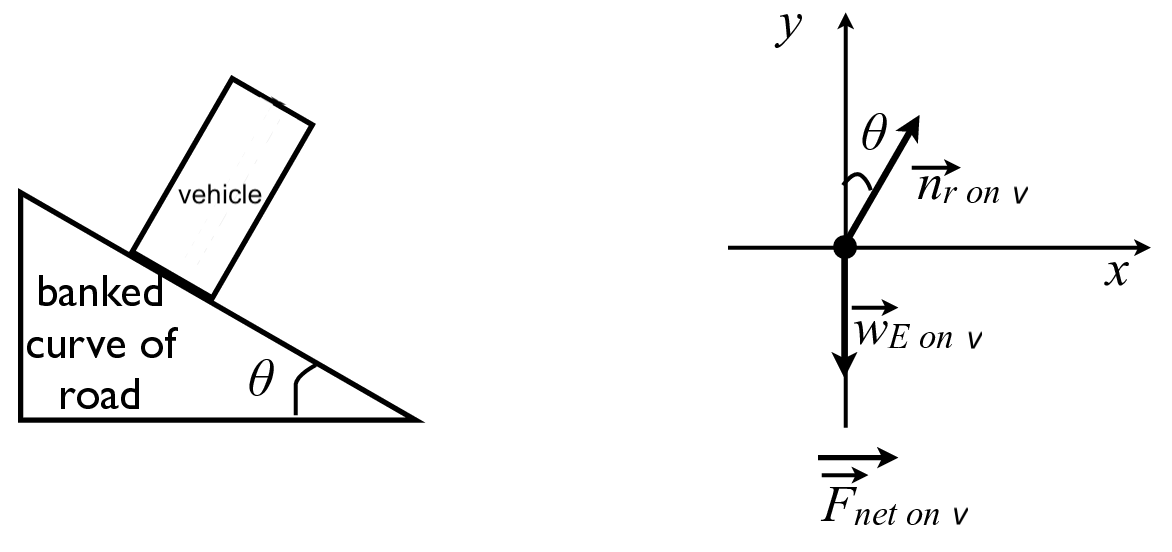Vehicle Around a Curve#
To ensure that motorists stay on roads with tight turns, it is common to tild (or bank) the roads toward the centre of the turn. A truck going around a banked curve without sliding is shown on the left of the figure below and its corresponding free body diagram is shown on the right of the figure below. In the free body diagram \(\vec{W}_{\textit{E on v}}\) is the weight of the truck, \(\vec{n}_{\textit{r on v}}\) is the normal force of the road on the truck, and \(\vec{F}\_{\textit{net on v}}\) is the net force on the truck. Take the angle to be \(\theta = {{ params.ang }}^\circ\) and the radius of curvature (distance from the centre of the circle to the truck) to be \(r = {{ params.rad }}\) \(\rm{m}\).

Part 1#
Write the equation for Newton’s second law in the \(x\)-direction.
Note that it may not be necessary to use every variable. Use the following table as a reference for each variable:
For |
Use |
|---|---|
\(W\_{\textit{E on v}}\) |
W |
\(n\_{\textit{r on v}}\) |
n |
\(\theta\) |
theta |
Answer Section#
Part 2#
Write the equation for Newton’s second law in the \(y\)-direction.
Note that it may not be necessary to use every variable. Use the following table as a reference for each variable:
For |
Use |
|---|---|
\(W\_{\textit{E on v}}\) |
W |
\(n\_{\textit{r on v}}\) |
n |
\(\theta\) |
theta |
Answer Section#
Part 3#
Solve the equations in Part 1 and Part 2 algebraically to determine the speed of the truck.
Note that it may not be necessary to use every variable. Use the following table as a reference for each variable:
For |
Use |
|---|---|
\(m\) |
m |
\(g\) |
g |
\(\theta\) |
theta |
\(r\) |
r |
Answer Section#
Part 4#
Determine the speed of the truck.
Answer Section#
Please enter in a numeric value in \(\rm{m/s}\)
Attribution#
Problem is licensed under the CC-BY-NC-SA 4.0 license.

